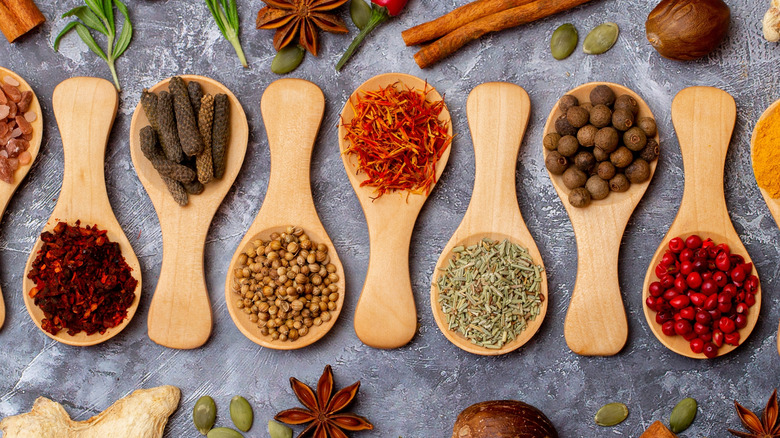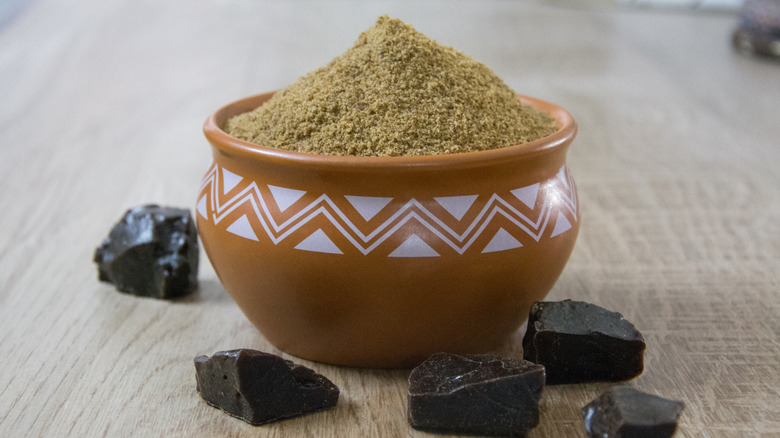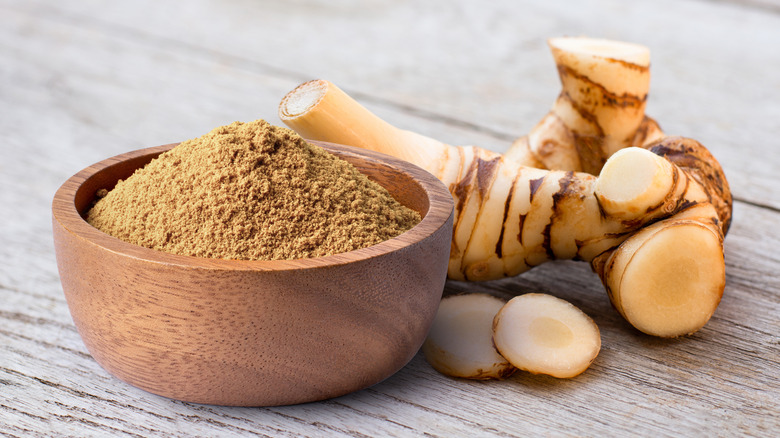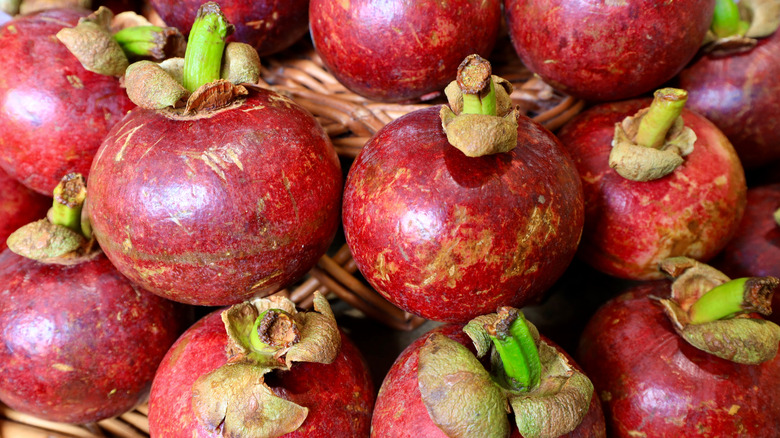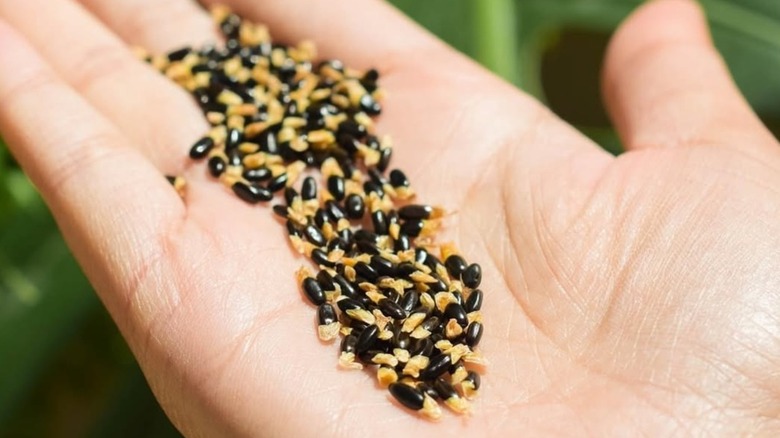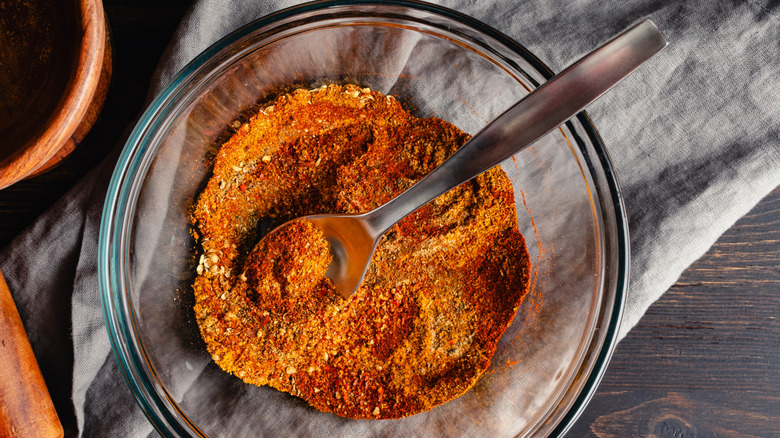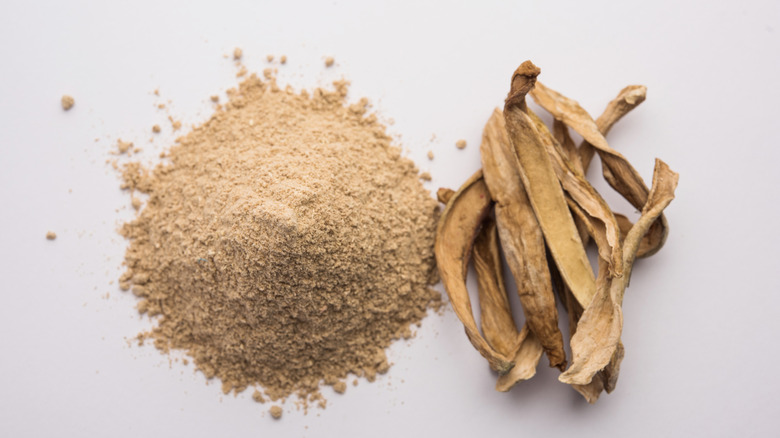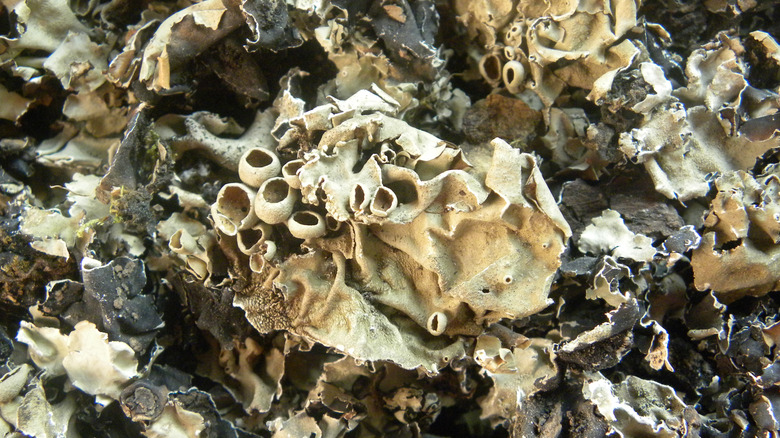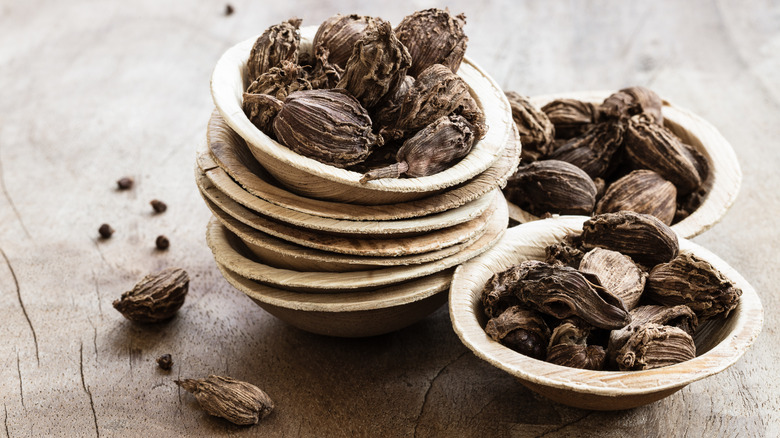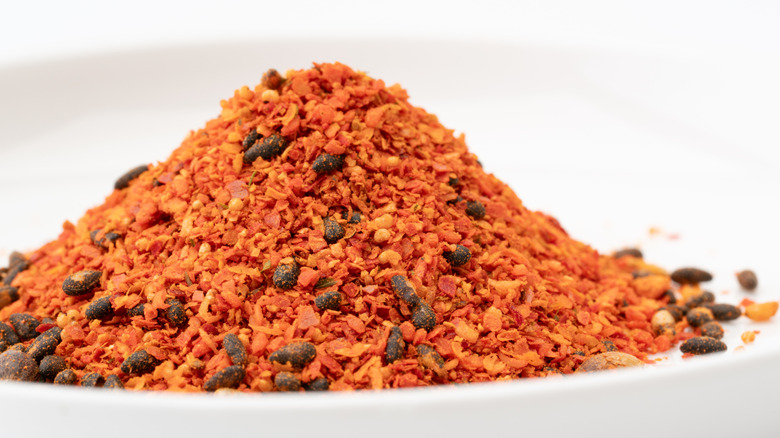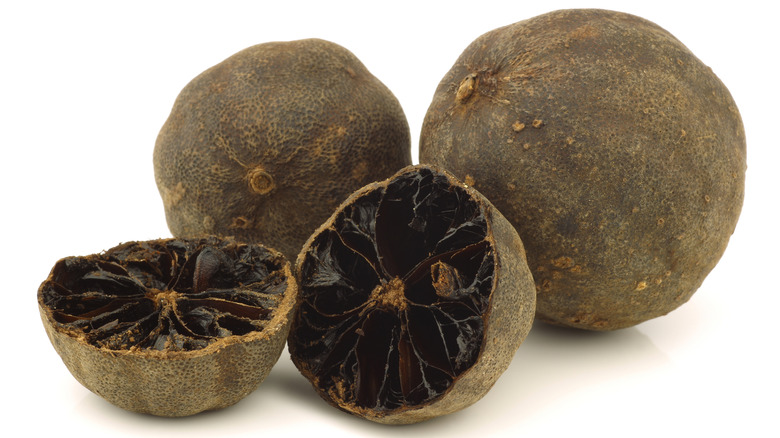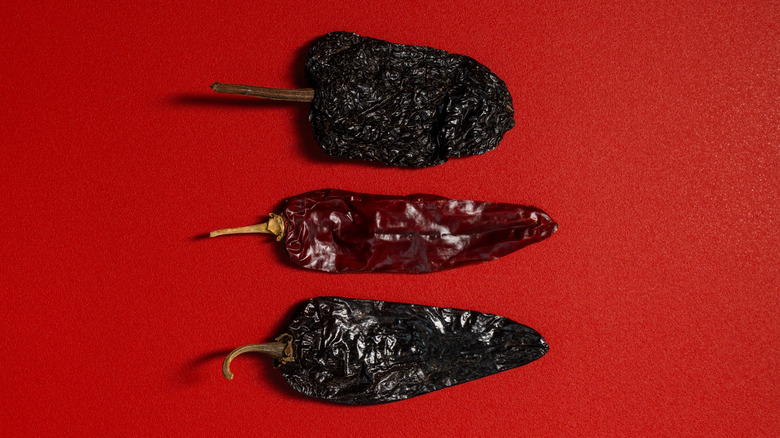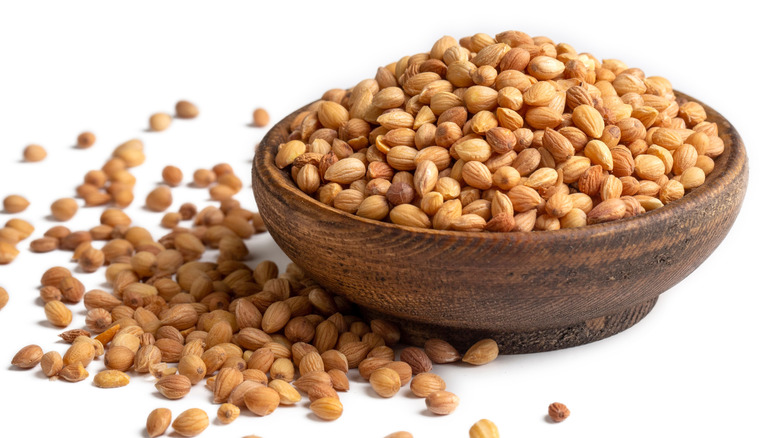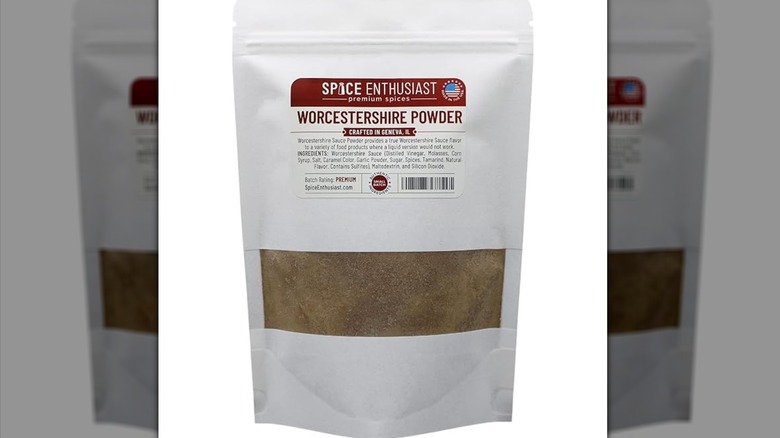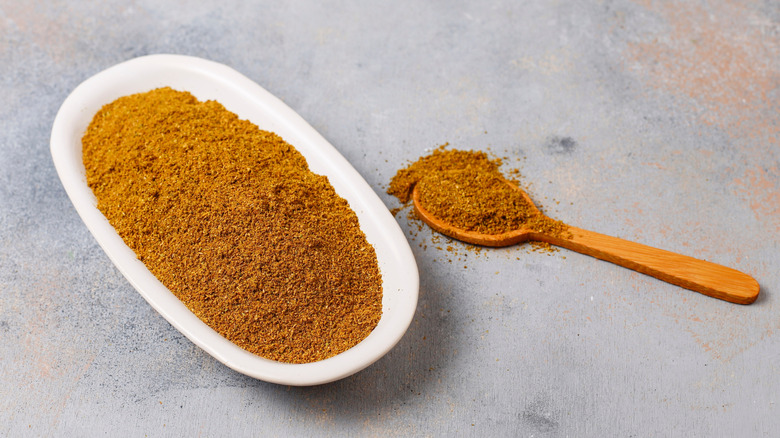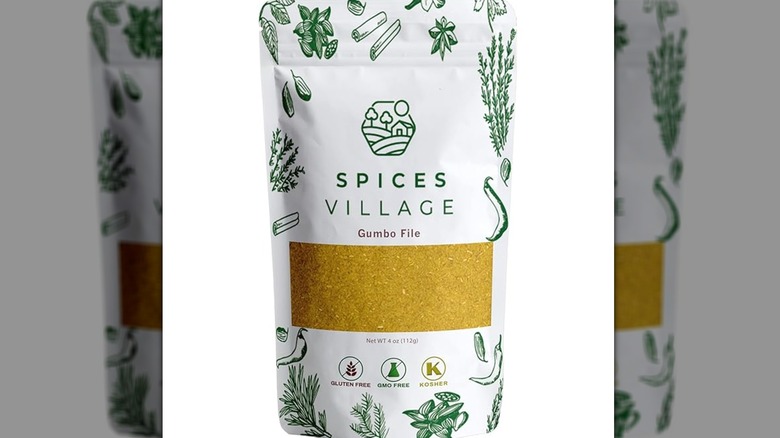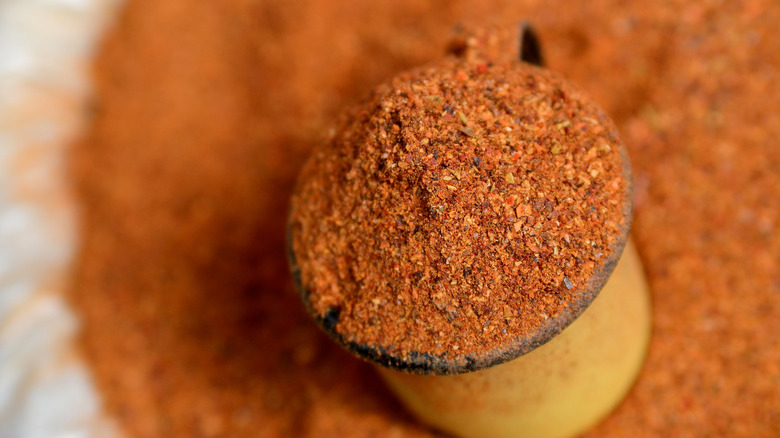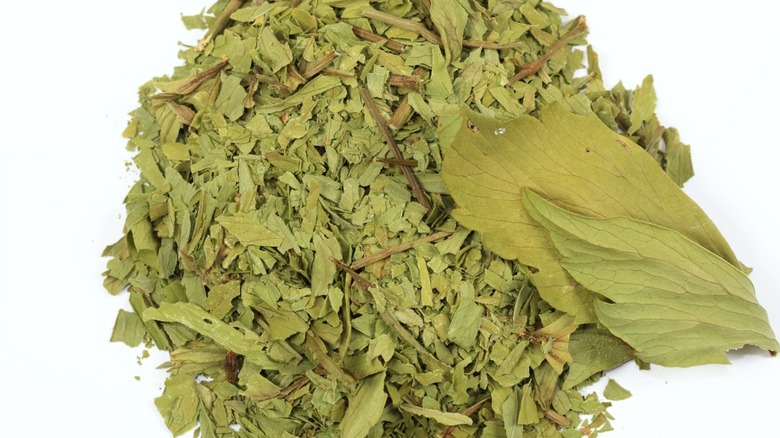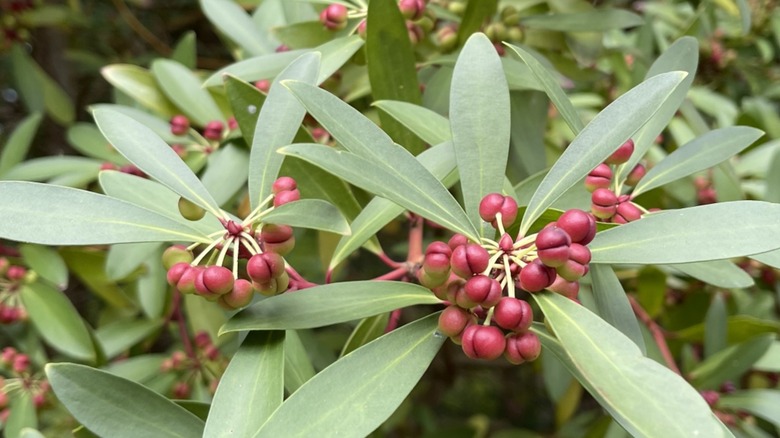20 Unique Spices That Will Give Your Dishes Pizzazz
We may receive a commission on purchases made from links.
Spices have been used for millennia by people all over the world to bring flavor and color to their food. But it took until 1672, when Boston's Elihu Yale launched his own spice business, for them to arrive in the United States. Since then, home-grown additions to the global range of exotic tastes include chili powder, as well as dried onions and garlic.
Today, millions of home cooks across the United States rely on spices like turmeric, black pepper, and paprika, to add color and flavor to meals. Who hasn't added cinnamon to a glass of hot cider? But, if you're tired of reaching for the same jars and are ready to try something new, we've got you covered. Here are 20 unique spices from around the world that will bring more than a sprinkle of pizzazz to your food.
Asafoetida
Indian food in the United States has become increasingly popular, and at the heart of many a delicious Indian dish is asafoetida. Pronounced "a-suh-feh-tee-da," it comes from a resin released by the ferula plant that grows wild in Afghanistan. The resin is ground down, mixed with rice flour and turned into a spice known in Latin as
"fetid gum."
One whiff of asafoetida and you'll understand why. Despite its eye-watering eggy odor, it is hugely popular thanks to its heat. A pinch dropped into very hot oil mellows after a few seconds to infuse your food with delicious, oniony, garlickyness. Use it in stews, curries, and maybe atop your deviled eggs, but make sure you keep it in an airtight container.
Galangal
A staple of Thai recipes such as soups and curry pastes, galangal is a little like ginger, but there are several key differences. Alpinia galanga is smoother, paler, and tougher to cut. It also has a fresh aroma, a much stronger flavor, and you don't need to peel it.
Unlike ginger, it's not wise to eat raw galangal, thanks to its bitter, unpleasant taste. After being finely chopped, however, it can be used in everything from stir-fries to soups. Grind it into a paste as a base for your next Thai curry, or add some thin slices for several minutes to a pan of leftover ramen or broth for a flavor boost. Just make sure you remove them before serving.
Garcinia indica
Who would have thought a sour tropical fruit would be the source of such a wonderful spice? Found in India, the garcinia indica tree is part of the mangosteen plant family and is also known as kokum. When ripe, the fruits are sun-dried and their skins removed (in the same fashion as removing peach skins, for instance) before being ground into a sour, slightly fruity-tasting spice.
Garcinia indica is similar to tamarind, and is often used to replace it, adding a shot of tartness to a variety of dishes. It's also a source of fiber, low in fat, and packed with vitamins and minerals. In some parts of India, whole pieces of kokum can be added to recipes (it pairs particularly well with food made using coconut milk) but should be removed before eating.
Wattleseed
Aboriginal peoples knew about Australia's wattleseed long before the wider world, but now everyone can get the benefits. Wattleseed comes from several species of the Acacia tree, and has a nutty, slightly coffee-like taste. It's great in everything from damper — a type of Australian bread – to stews and stirred into coffee.
As well as being tasty and versatile, wattleseed is packed with protein and slow-release carbohydrates. Depending on the species, it also contains calcium, potassium, zinc, and iron –though some raw wattleseed can have chemicals that prevent the body from processing essential nutrients. Specialist food stores sell wattleseed in the United States, so it's worth reading the label carefully.
Berbere
You don't have to have read "Ethiopia: Recipes and Traditions from the Horn of Africa" by Yohanis Gebreyesus to appreciate Ethiopian cuisine and the important role that berbere plays in it. Originating from the Eritrea-Ethiopia region, berbere is a mix of wet and dry herbs and spices that are ground and dried to make a delicious, aromatic and unique spice blend.
Berbere has chili peppers at its core, and also includes paprika, ginger, and garlic, but home cooks can choose what goes into it. If you're not keen on making some, pre-made berbere is available online. Although it does bring heat to dishes, it's not as hot as mitmita, a combination of fiery chili peppers, cloves, and cardamom.
Amchur
Nothing slaps like a sweet, juicy slice of mango on a warm day. But this popular fruit is also behind a tangy, much-loved Indian spice. Amchur is a spice made from unripe mangoes that have been sun dried, and it is to food what a dash of lemon is to drinks.
A pinch of amchur — sometimes sold as dried mango — will add much-needed oomph to a bowl of hummus, or breathe new life into a fruit salad. At your next barbecue or movie night, sprinkle a little over a bowl of popcorn and serve it as an alternative to sweet or salty. Amchur is great in savory dishes too, and it's a key component of the chaat masala spice mix.
Dagad phool
Depending on the language, dagad phool has several names including kalpasi, patthar ke phool, and black stone flower, but it's all the same smoky spice. Made from a lichen that grows across India and the Himalayan region, it is very acidic when harvested, so it's soaked in a salt or potassium solution before being dried.
Throughout India, dagad phool is used in dishes such as Maharashtrian goda masala and Chettinad chicken. While it infuses other recipes with its smokiness, and can help thicken dishes like soup, it's not recommended as a standalone food, as it tastes quite bitter. If you want to give it a whirl, 2 ounces of black stone flower will set you back around $5.
Black cardamom
Green cardamom pods with their fresh taste are a fixture in many an American cupboards, but black cardamom, also known as Amomum subulatum, is another beast entirely. This popular spice brings its distinct, floral warmth to a vast number of Indian dishes, including biryani and dal.
The beans are heated in traditional bhatti ovens to give them their signature smokiness. You can buy whole black cardamom beans and drop them as they are into a curry or stew to really boost the depth of flavor. Alternatively, crack or grind them to make a spice rub next-level amazing, or pop a pinch in your latte for added pizzazz.
Shichimi togarashi
Lovers of Japanese food may be familiar with the all-purpose spice shichimi togarashi, one of three popular, chili pepper-based condiments. Less hot than ichimi and not as citrusy as nanami, shichimi togarashi — aka seven spice — is sprinkled over everything from noodles and cheesecake to sushi.
Shichimi togarashi is made from red chili and sansho peppers, ginger, citrus peel, sesame, hemp, poppy seeds, or nori. This complex spice can bring everything from an umami kick to a peppery, citrus burst to food. If you're not up to making your own version of shichimi togarashi at home, you can pick up a 14-gram, funky-looking tin from $7.49.
Black lime
Black limes may look like something that belongs in the garbage — but if you're looking to give recipes more complexity, these funky, fermented citrus fruits are the way to go. A staple of Persian and Middle Eastern cooking, black limes are made by blanching the fresh fruit in salted scalding, then ice-cold water, before drying either in the sun or an oven.
You can use them whole in broths or stews, though make sure to wash and pierce them, so they can infuse all the liquid. Black limes can also be powdered and sprinkled on meats, pasta, fish, and salads, bringing its earthy tang to everything it touches. Mix some with Angostura bitters and rum for your own tart version of loomi tea.
Mexican dried chilis
Tacos. Carne asada. Pozole. Sopes. Mexican food is one of the world's best at delivering flavor by the bucketful, thanks to one of its core ingredients: chili pepper. The country grows more than 150 varieties of pepper, and many of them can be dried and made into spices. Some fresh types get new names after the drying process.
The flavors of Mexican dried chilis are as diverse as their number. Pasilla, ancho, and guajillo are among three of the most popular. Pasilla, also known as "little raisin," has a fruity quality, while mild-tasting ancho is great for adding depth to dishes. Guajillo also brings mild levels of heat to the table, yet packs a punch in marinades or dry rubs.
Mahlab
Cherry tree flowers are charming, while their fruit is delicious. But cherries from St. Lucie's trees in the Middle East are the gift that keeps on giving. Pits from this fruit are cracked open and the seed kernel inside is ground down to produce mahlab (sometimes written mahleb). It's commonly used in cookies and baked items, thanks to its hints of cherry and vanilla.
If you get hold of some whole mahlab kernels, don't be tempted to grind them until you need them, as they lose their potency soon after. According to The Armenian Kitchen, you can keep them in the freezer for "a very long time." Alternatively, you can buy a resealable, powdered version and store it in a cool, dark place.
Worcestershire powder
The almost unpronounceable sauce has been splashed into millions of recipes, but did you know there's a powdered version of the iconic, salty condiment? Worcestershire (pronounced "wu-ster-sher") sauce was originally an attempt to recreate the Greek and Italian garum. Sadly, the mix of ingredients including tamarind, malt vinegar, onion, molasses, and cloves was inedible.
After being set aside for a while, the concoction mellowed into the deeply savory liquid now known all over the world. Worcestershire powder is a dried version of the sauce, offering a concentration of salty, umaminess in every sprinkle. You can either add a drop of water to make a sauce or add it to a meat rub for that dash of pizzazz.
Khmeli Suneli
The Armenian and Georgian communities in the United States are very familiar with Khmeli Suneli. Julia at Imagelicious likens it to a "Georgian version of curry powder" but without the cumin or turmeric. This flexible, aromatic spice is great for adding warmth and depth to your favorite canned soups, and makes a great meat rub — particularly for roast chicken.
To make Julia's version, grind up fenugreek seeds, chili powder, dried tarragon, dill, marjoram, and parsley, bay leaves, and ground coriander, or this Middle Eastern spice if you're missing the latter. If you pop it in an airtight container that can be shaken before use, it will pep up your meals for three to six months. If you don't have a suitable grinder, you can buy it ready made for less than $10.
Kampot peppercorns
There are peppercorns, and then there are Kampot peppercorns from Cambodia, regarded by chefs and aficionados as the world's best. They grow in the southwestern province of Kampot, and as a recognized food product from that region, they are as protected as champagne.
When the peppercorns are ready to be picked, they start to turn red. The more mature ones are black, while fully ripened peppercorns are white. Each is sun-dried, before being sold to restaurants and foodies around the world. The three Kampot corns have different qualities: Red is floral and minty, the black peppercorns have a sweet hint, while the white berries have a lemony, herby taste.
Filé powder
With a history that goes back to Choctaw native Americans, filé powder is also at the heart of a lot of Creole and Cajun cuisine. Made from ground-up young sassafras albidum leaves, it is a key ingredient in gumbo. Although an extra dash is often slipped in at the end of cooking, be aware that filé powder doesn't like too much heat or it can turn your food stringy.
Filé powder comes in pouches and bottles, making it easy to sprinkle its distinct, fruity taste to robust stews and soups, (it will help to thicken both) while also boosting a recipe's flavor profile. It's also a commonly used substitute for okra when the latter's out of season.
Chilean merken
Only one variety of many types of chilis is used by the indigenous Mapuche people to create Chilean merken or Merquén spice blend. They use sun-dried Cacho de Cabra peppers, also known as Basque chilis, which they smoke and add to ingredients, including toasted coriander seeds.
The result is an earthy and smoky spice that complements a range of foods, from roasted vegetables and stews, to grilled meats. Add a pinch to bold up your next bowl of salsa, stir it into a tomato-based sauce, sprinkle some merken onto tacos to give them punch, or add a dash to those spicy Friday night margaritas.
Lovage
When does an herb become a spice? It's an argument that could run forever but lovage, with its robust, peppery kick, manages to straddle the divide. This easygoing plant can grow in almost any location and tastes a little like celery with a twist of aniseed. You can eat it raw, cooked, and candied — and you can also dry it.
The process of drying lovage can sometimes intensify the taste, and if you've never done it before, picking up a sachet of dried leaves online may be the easier option. Try dropping some into the water as you boil potatoes before mashing them, or add a sprinkle to soups and stews to bring complexity to the flavor.
Gochugaru
There is a growing demand for Korean food in the United States, offering the perfect audience for the flexible chili flake known as gochugaru. It is one of several pepper-based spices in the country's cuisine, and comes in two intensities, depending on how many seeds from taeyangcho peppers they contain: Maewoon, which is spicier than deol maewoon.
You'll find gochugaru in the majority of Korean restaurants and home kitchens, where it's part of everything from kimchi to bowls of fresh salad. Because it comes with two levels of heat, it's a flexible ingredient too. It's a great spice for marinating any meat destined for a barbecue, but also brings punch and smokiness to soups and stews.
Pepperberry
Australia may be full of deadly creatures but it's also a bit of a foodie's paradise. Take the pepperberry, for example, also known as the Mountain pepper, which has long been a traditional Aboriginal flavoring. Fresh, it brings a spicy, herby boost to everything from salads to marinated crocodile.
More conventionally, if you find you're short of black pepper, dried pepperberry can be swapped in and will deliver just as much flavor. Pepperberry leaves can also be dried and used in cooking. Their taste is similar to the berries, but with the intensity turned down slightly, making them a great way to pep up vinaigrettes or a pasta sauce.
